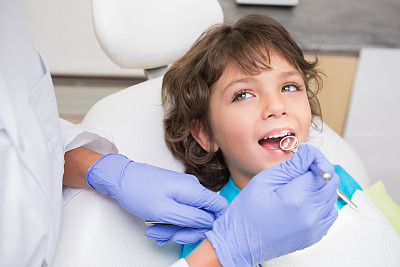The Essential Guide to Extracting a Tooth Safely at Home and What to Expect During the Process
Summary: Extracting a tooth at home may sound intimidating, but with proper guidance and precautions, it can be done safely. This article provides a comprehensive guide to the essential steps for safely extracting a tooth at home, including identifying the right tooth, preparing your tools, the extraction process itself, and aftercare. Whether youre dealing with a loose baby tooth or an adult tooth in pain, understanding what to expect during the procedure can help alleviate fears and ensure a smooth experience. Our aim is to empower readers with the knowledge they need to handle tooth extraction safely, while also emphasizing the importance of consulting a dentist when necessary.
1. Identifying the Right Tooth for Extraction

Before attempting to extract a tooth at home, it is crucial to identify if it is the appropriate tooth to remove. Loose baby teeth are the most common candidates, as they are meant to fall out naturally. If an adult tooth is causing pain or discomfort, it may be due to decay or infection, and extraction should ideally be performed by a dental professional.
Take time to assess the tooths condition. If the tooth is not significantly loose or causing severe discomfort, it may be better to wait. Attempting to extract a tooth that is still firmly attached can lead to complications, including fracture of the tooth and potential damage to surrounding teeth or bone.
If youre uncertain, seek consultation from a dentist. They can provide insights based on your specific dental health and might suggest alternative solutions to tooth extraction.
2. Preparing Tools and Setting Up the Environment
Preparation is key when undertaking a tooth extraction at home. Gather all necessary tools beforehand to ensure the process goes smoothly. Recommended items include clean dental pliers, sterile gauze, antiseptic solution, and possibly an ice pack. Ensuring that all tools are clean is vital to prevent infection during and after the extraction.
Next, choose a comfortable and well-lit area for the procedure. It’s important to remain calm, so select a space where you feel at ease. Have a friend or family member nearby to assist, particularly to hold items or provide comfort if needed.
Moreover, consider the timing of the procedure. It’s best to choose a day where you won’t be rushed and can take your time with the process. Reducing stress can help you focus and handle any unexpected situations that might arise during the extraction.
3. The Extraction Process Step by Step
The actual extraction process requires careful execution. Start by rinsing your mouth with an antiseptic solution to reduce the risk of infection. Gently grasp the tooth with your dental pliers and wiggle it back and forth to loosen it further. It’s essential to use slow and controlled movements to prevent any breakage.
If the tooth is particularly stubborn, apply a little more pressure, but be mindful of your pain threshold. If you encounter excessive resistance, it may be a sign that the tooth cannot be extracted safely at home and should be examined by a dentist.
Once the tooth comes out, apply pressure using sterile gauze to control any bleeding. This may take about 10-15 minutes, and its vital to keep the area clean. Avoid rinsing your mouth for the first 24 hours after extraction to allow for clot formation.
4. Aftercare for a Smooth Recovery
After the tooth extraction, diligent aftercare is imperative for healing. Follow up with an ice pack on the outside of your cheek to reduce swelling. This should be applied for about 15 minutes on and 15 minutes off for the first few hours after extraction.
Continue to be mindful of your diet. Stick to soft foods and avoid anything that might irritate the extraction site, like spicy or crunchy foods. Staying hydrated is also important, but ensure you don’t use straws for at least 24 hours as the suction can dislodge the blood clot.
If you experience any unusual pain, swelling, or bleeding that doesn’t subside, seek immediate dental care. Recognizing when something is wrong is just as crucial as the extraction process itself and ensures that you maintain optimal dental health.
Summary:
In conclusion, extracting a tooth at home safely requires careful planning, the right tools, and understanding of the process. While it can be done, being fully informed helps manage the risks involved. Always consider consulting a dentist when in doubt or faced with complications that exceed home management.
This article is compiled by Vickong Dental and the content is for reference only



